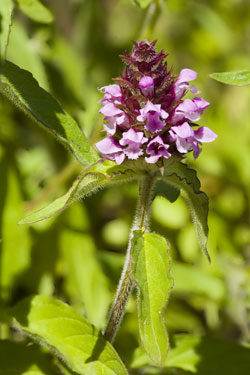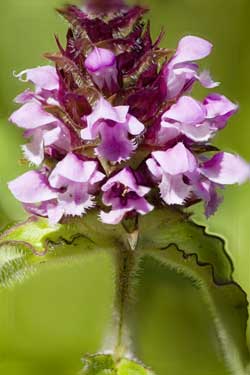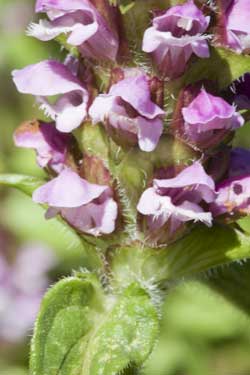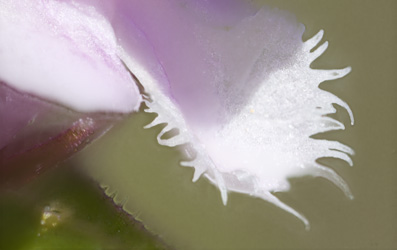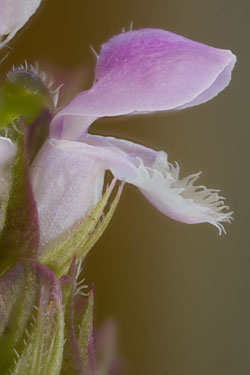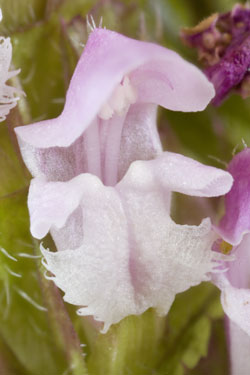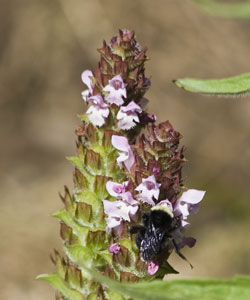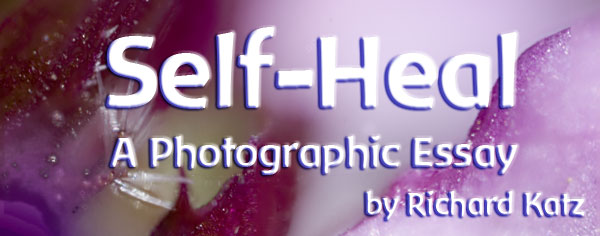
|
|||||||||
|
|
|||||||||
| The stem of the Self-Heal plant is covered with very fine, sensitive hairs, which continue into the flower head and the leaf-like bracts that surround each flower. |
|
||||||||
|
|
||||||||
| The edges of the lower "lip" petals echo the hairy quality we see on the stem and bracts. | |||||||||
|
|||||||||
|
|
||||||||
| The Self-Heal flower has the mouth-like shape characteristic of the Mint Family. The traditional name of the family — Labiatae — is descriptive of the upper and lower lips that characterize Mint Family flowers. The upper lip, consisting of two fused petals, covers the pistils and stamens like a hood. The lower lip consists of three fused petals with a protruding center lobe. | |||||||||
| The bilateral symmetry of this five-petaled flower is an echo of the bilateral animal form, as contrasted with the star-like, bell-shaped or cup form of many flowers. The interior space created by the blossom's “mouth” and “throat” provide the perfect welcome for the bee to bury itself in the blossom and drink deeply of its nectar. |
|
||||||||
| Self-Heal blossoms are found in both blue-purple and magenta tones. According to our research, the magenta-colored flowers are preferred for the flower essence, as it is the color of rejuvenation of the life forces. It is the complementary color to the life-affirming green that forms the foundation of plant life | |||||||||
|
|||||||||
| Robust yet receptive, Self-Heal offers itself as a universal reminder of the healing power of Nature and of our own inner nature; it connects us with the renewing waters of life. | |||||||||

To install this Web App in your iPhone/iPad press ![]() and then Add to Home Screen.
and then Add to Home Screen.
